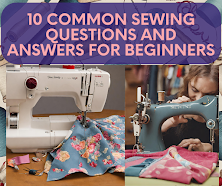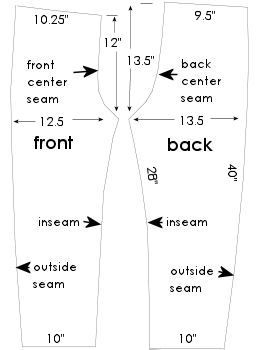10 Common Sewing Questions and Answers for Beginners
Sewing is a versatile and rewarding craft that allows you to create beautiful clothing, home decor, and more. However, if you're new to sewing, it can be a bit overwhelming with all the terminology, techniques, and equipment involved. In this blog post, we'll address 10 common sewing-related questions that beginners often have and provide clear and concise answers to help you get started on your sewing journey.
What essential tools do I need to start sewing?
Answer: To start sewing, you'll need some basic tools, including a sewing machine, fabric scissors, pins, a seam ripper, measuring tape, thread, and needles. These tools are essential for most sewing projects and will help you get started on the right foot.
How do I choose the right fabric for my project?
Answer: The choice of fabric depends on your project. Generally, beginners should start with medium-weight cotton fabrics as they are easy to work with and forgiving. As you gain experience, you can experiment with different fabrics like silk, denim, or knits.
What's the difference between hand-sewing and machine-sewing?
Answer: Hand-sewing involves using a needle and thread to stitch fabric together manually, while machine sewing uses a sewing machine to create faster and more uniform stitches. Hand-sewing is ideal for small repairs or delicate projects, while machine-sewing is faster and more suitable for larger projects.
How do I read and follow a sewing pattern?
Answer: Sewing patterns are guides for creating specific garments or items. To read and follow a pattern, start by understanding the included instructions and markings. Pay attention to the sizing information, layout, and the pattern pieces' assembly order. Take your time and follow each step closely.
What is a seam allowance, and why is it important?
Answer: A seam allowance is the area between the stitching line and the raw edge of the fabric. It provides room for stitching, finishing, and adjusting the fit. Common seam allowances are 1/4 inch, 1/2 inch, or 5/8 inch. Always check your pattern instructions for the correct seam allowance.
How do I sew a straight line?
Answer: Sewing a straight line takes practice. Begin by aligning your fabric edge with the presser foot guide on your sewing machine. Maintain a consistent speed and gently guide the fabric. You can also use masking tape or chalk lines as a visual guide.
What are the most common sewing machine issues, and how can I troubleshoot them?
Answer: Common sewing machine issues include thread jams, tension problems, and broken needles. To troubleshoot, rethread the machine, check the bobbin, and adjust the tension as needed. Always consult your machine's manual for specific troubleshooting tips.
How can I avoid common sewing mistakes like puckering or fabric bunching?
Answer: Puckering and fabric bunching often result from incorrect tension settings or not holding the fabric taut. Ensure your machine's tension is properly adjusted for the fabric you're using, and practice sewing in a straight line with even pressure on the fabric.
What is a backstitch, and when should I use it?
Answer: A backstitch is a sewing technique used to secure the beginning and end of a seam. To backstitch, sew a few stitches forward, then reverse the machine to sew over the same area. It prevents the thread from unraveling.
How can I improve my sewing skills?
Answer: To improve your sewing skills, practice regularly, start with simple projects, and gradually work your way up to more complex ones. Take sewing classes or watch online tutorials for guidance. Don't be afraid to make mistakes, as they are valuable learning experiences.
Conclusion:
Sewing can be a delightful and fulfilling hobby once you understand the basics and gain some experience. By addressing these ten common
sewing questions, we hope to provide you with the knowledge and confidence to embark on your sewing journey. With patience and practice, you'll be creating beautiful handmade items in no time. Happy sewing!




Comments
Post a Comment